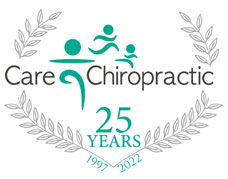Chiropractic care isn’t really about cracking your back and neck after you have a car accident. That perspective limits the conversation about Chiropractic and may prevent people from experiencing the full range of care that Doctors of Chiropractic can offer.
There are some physiological issues people encounter that may seem very strange but are probably more prosaic than we realize. Even so, a mundane issue that we don’t know about can still cause a lot of pain and stress that we do know about.
Here are three examples of conditions that you may not have realized your Chiropractic Doctor may be able to help you with:
One Leg is Shorter than the Other
Try this. Sit on the floor and stretch your legs out in front of you. Does one of them appear shorter than the other (ask a friend to verify)? If so, don’t panic – the appearance of a leg appearing shorter than the other doesn’t necessarily mean you have some type of bone defect. In fact, the issue may have little to do with the actual length of your leg!
Habitual posture troubles, incorrect or unsupportive footwear, or even muscular tightness or weakness on one side may be the culprit of your “short” leg. Still, even if the problem isn’t as medically serious as you first thought, if it’s affecting your life it’s time to ask for help. Your chiropractor can establish a care plan for you that may have more benefits than just a “lengthened” leg!
Hunched Back (Kyphosis)
Did you know there’s a medical term for a “hunched back?” The term is “kyphosis” and the Mayo Clinic simply defines it by saying:
“Kyphosis is an exaggerated, forward rounding of the back. It can occur at any age but is most common in older women.”
There are many potential causes of kyphosis (e.g. congenital issue, injury, osteoporosis, posture, etc.) and it can cause mild to severe discomfort and even pain.
Chiropractic treatment for kyphosis always begins with an examination by your Chiropractic Doctor. Diagnosing the specific extent/severity of kyphosis, like any other issue, begins with a physical exam, and may require further medical imaging (e.g. xrays). Treatment may include musculoskeletal manipulation, ongoing therapeutic exercises, non-invasive medical procedures (e.g. ultrasound), and more.
Carpal Tunnel Syndrome
The Mayo Clinic once again provides a helpful definition:
“Carpal tunnel syndrome is caused by pressure on the median nerve. The carpal tunnel is a narrow passageway surrounded by bones and ligaments on the palm side of your hand. When the median nerve is compressed, the symptoms can include numbness, tingling and weakness in the hand and arm. The anatomy of your wrist, health problems and possibly repetitive hand motions can contribute to carpal tunnel syndrome.”
Treatment for carpal tunnel syndrome is determined by your Chiropractic Doctor. It may include wearing a certain type of wrist support along with other treatment options depending on the severity of your case.
If you would like to speak to a Chiropractor for a consultation about these or other issues, please contact us today. Relief may be just around the corner for you!


